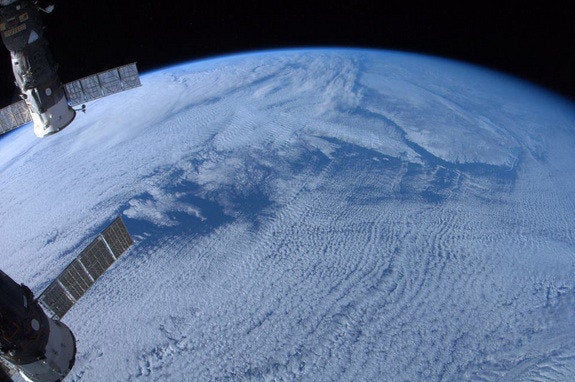
As a blizzard makes its way toward the Northeast, numbers suggest the world is actually pretty hot, with temperatures across the globe making last month the second warmest January in the past 35 years.
Globally, January had an average temperature that was 0.92 degrees Fahrenheit (0.51 degrees Celsius) above a 30-year baseline average, said John Christy, a professor of atmospheric science and director of the Earth System Science Center at The University of Alabama in Huntsville.
This January takes a back seat only to January 2010, with January 1998 coming in as the third warmest during this period.
During the past month, the globe's coldest spot centered on Russia, near the town of Nyagan, where temperatures averaged about 4.5 degrees F (2.51 degrees C) below seasonal norms there. Meanwhile, as compared with seasonal norms, the Norwegian Arctic archipelago of Svalbard (located north of Norway and east of Greenland) showed the warmest temps in January. There, the thermometer rose some 7.4 degrees F (4.1 degrees C) above January norms.
The global numbers are part of an ongoing project between the University of Alabama, the National Oceanic and Atmospheric Administration (NOAA) and NASA. Instruments aboard NOAA and NASA satellites measure the temperature of the atmosphere from Earth's surface to an altitude of about 5 miles (8 kilometers) above sea level. Once processed, the monthly temperature data is placed in a publicly available computer file.
January heat follows right on the heels of the warmest year on record in the contiguous United States, stretching back to the 1880s, a record that NOAA scientists announced last month.
Every contiguous U.S. state had an above-average annual temperature for 2012, with 19 states boasting a record warm year and an additional 26 states experiencing one of their 10 warmest years, NOAA's National Climate Data Center (NCDC) reported.
As for what's behind the warming trends, "It's a combination of longer-term trends and local effects or regional effects like the drought," NCDC climatologist Jake Crouch told LiveScience in November, referring to the widespread drought conditions in the United States in 2012.
Follow LiveScience on Twitter @livescience. We're also on Facebook & Google+.
The Reality of Climate Change: 10 Myths Busted
Photos: The Coldest Places on Earth
Image Gallery: One-of-a-Kind Places on Earth
Copyright 2013 LiveScience, a TechMediaNetwork company. All rights reserved. This material may not be published, broadcast, rewritten or redistributed.
